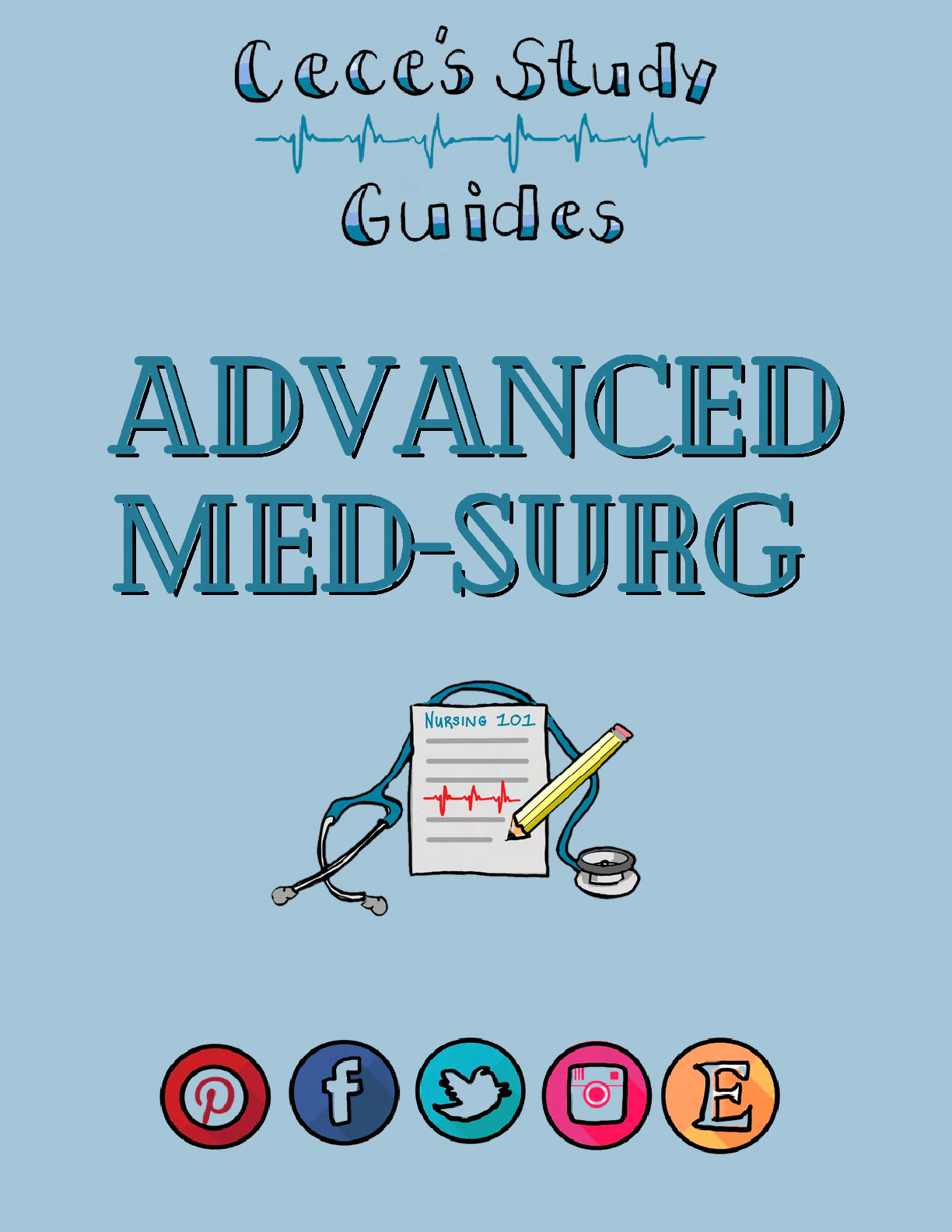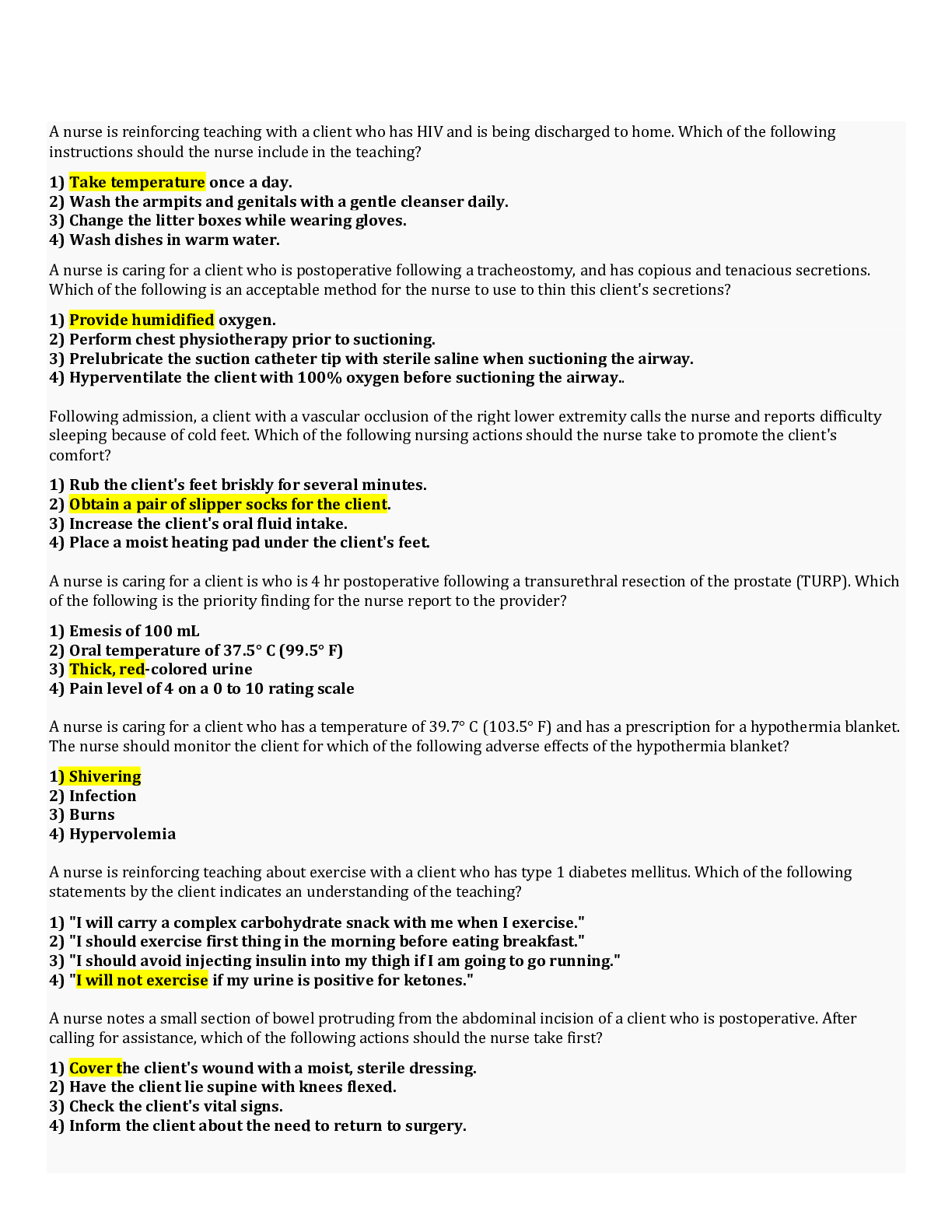*NURSING > STUDY GUIDE > Final Review N1200 Nursing Process & Perioperative Nursing (All)
Final Review N1200 Nursing Process & Perioperative Nursing
Document Content and Description Below
Nursing Process Definition & Elements 5 step critical thinking process that is goal directed to achieve optimal patient outcome Why? To provide optimal patient care A.D.P.I.E. – assessment, dia... gnosis, planning, implementation, and evaluation. Assessing ? gather data Analyzing ? I.D. problem, formulate nursing diagnosis Planning ? write care plan to meet goals Implementing ? carry out plan Evaluating ? collect objective data to determine the extent to which goals were achieved. Revise plan as needed. Surgery The art and science of treating diseases, injuries, and deformities by operation and instrumentation. Purpose: - safety; to “rule out” or “r/o” Diagnosis – an example when a doctor ask for biopsy to see if there is something underneath the tissue (think about when Ate Ana had to get sample on her throat to confirm cancer) Prevention Exploration – indication, ER or trauma environment to decide how bad the trauma is, an example would be an abdominal abscess to see how deep or aggressive so the doctor could request exploratory type of surgery to see how deep it is Cure – an example will be removal of the rupture appendix Palliation Cosmetic – an example would be for the pt. that had mastectomy (removal of breast tissue – breast cancer pt) Inpatient – needs more than 24 hr observation, require hospitalization Emergent Must be done immediately to save life or preserve function Ex: control of hemorrhage, ruptured appendix, amputation for gangrenous limb “right away,” literally an emergency Urgent Necessary for client’s health and to prevent other health problems Ex: excision of malignant tumor, cholecystectomy, joint replacement There’s a little bit of time to prepare Elective Not necessary to preserve life. Often done as client’s choice Ex: plastic surgery, gastric bypass, scar revision, penile implant Most controlled procedure Carefully planned between the pt and doctor Outpatient Elective No monitoring required after the procedure The patient could go home unless there’s complications (can become inpatient) Ambulatory Such cataract removal, hernia repair Surgical Settings The Interdisciplinary Team members – including the pt even though the pt is not involve in the surgical procedure but pt is important fr safety. The pt is involve in all 3 perioperative phases. BIO Perioperative phases – is the entire operative process which includes: 1 nurse in each phase per ATI Preoperative – before surgery Begins at time of determination of surgical need. Can be minutes to weeks. Assessment, teaching, preparation, consent, diagnostics, preop checklist, medications Intraoperative – during surgery Identification, reducing anxiety, protection, positioning, monitoring, maintain surgical asepsis, documentation Postoperative – after/following surgery Assessment (ABCs) recovery, reinforcement of teaching, prevention of complications Preoperative Nursing Patient Interview & Nursing Assessment Happens any time before the surgery Does it have to happen in surgery center? No, it could happen in doctor’s office Safety ? eliminate or r/o, reduce or prevent chances/risk of complications Managing anxiety and fear! ? SOLER (sit facing pt, open posture, lean towards pt, intermittent eye contact, relax) Purpose of preoperative is to: SAFETY Assess risk factors & prepare to initiate a plan of care to ensure safety Establish baseline data for comparison Baseline = pts “normal” Head-to-toe assessment, vital signs, and oxygen saturations Determine psychologic status Emotions = anxiety/fear/hope Anxiety usually due to lack of knowledge of the procedure Fear of death or permanently disability, allow the patient to express their fear, explore their feelings Hope is a positive factor for surgery when patient anticipated for positive outcome from the procedure Our ultimate goal is to assess these 3 emotions Anxiety level = regarding the procedure, support systems, and coping mechanisms Determine physiologic factors of procedure contributing to risks We have to take into consideration in their family history, or any medical history or current problems and reason for surgery It gives an idea if the patient could have an adverse reaction such as malignant hyperthermia, bleeding Assess medications, herbs, OTC Aspirin Garlic & gingko biloba ? bleeding complications Ginseng ? BP to increase Kava/valerian ? sedative, promote sleep It is NOT in our scope of practice to STOP the patient from taking their herbs/meds that they have been taking, only MD could Obtain detailed medical and surgical history Detail on family history ? malignant hyperthermia Subjective date & Objective data Assess allergies Allergies to banana, avocado or kiwi can indicate the client is at risk for a reaction to latex Allergy to eggs or soybean oil is a contraindication to the use of propofol for anesthesia Allergies to shellfish can result in a reaction to povidone-iodine – use for contrast Review of Systems: Subjective & Objective Data Continued Assessment of different body systems alert the nurse of areas to closely monitor during preoperative physical assessment = head-to-toe assessment Cardiovascular system – listening to the heart sound is normal, quality of the sound is efficient Respiratory system – airway, breathing, how effective is their breathing, are there any sputum or cough, respiratory rate or rhythm Neurologic system – A&O level Genitourinary system – I&Os Hepatic system – I&Os Integumentary system – pressure ulcer Musculoskeletal system – ROM, gait, any weakness or deficit Immune system – infection Endocrine system – diabetic patient, delayed healing, infection Fluid & Electrolyte status & Nutritional status – basic metabolic panel = looks at BUN, creat… GI system – we want to make sure our patient is able to pass gas, getting back their bowel movement Diagnostic Studies Diagnostic Studies/Test Rationale Urinalysis Renal failure, r/o infection Blood type & cross match Transfusion readiness CBC Fluid status, anemia, infection/immune status Pregnancy test Fetal risk of anesthesia Clotting studies PT, INR, aPTT, platelet count Electrolyte levels Evaluate imbalances Serum creatinine & BUN Renal status ABGs Oxygenation status Chest x-ray Heart and lung status 12 lead ECG Baseline heart rhythm, abnormalities Nursing Management: PREOPERATIVE Preoperative Teaching General surgery information Ambulatory surgery information Legal Preparation for Surgery Informed consent Blood transfusions Advance directives Power of attorney Day of Surgery Preparation Final preoperative teachings Reassessment and verification of pertinent findings Verified that informed consent is signed Administer preoperative Administer preoperative medications as ordered Transportation to the Operating room (OR) Handoff using SBAR – think safety! Information for family and caregivers Special considerations for our geriatrics! Preop Nursing Management 1st: Preoperative Teaching General Surgery All pt will receive regardless whether inpatient or outpatient Teaching patient how to avoid complications after surgery Ambulatory Surgery Usually applies to those outpatients or same-day operation TCDB – turn, cough, deep breath = to help open up their lungs Must have a “DD” (designated driver) IS - incentive spirometer Usually, this would brief questionnaire SCD - sequential compression devices = to prevent DVT Proper clothing (the device that goes onto the calf area) Ambulation Bring medication or whatever they have been taking Both categories of preoperative teaching need NPO = 2 hrs liquid & 6 hrs solid – to avoid aspiration Could occur at home, through the phone, at the doctor’s office, preadmission 2nd: Day of Preparation The “Check In” Patient’s belonging “DD” making sure they have one Inform consent Inform family member where should wait and possible outcome 3rd: Transportation to OR Hand off occur where preop nurse repeat to the intraop nurse Usually focusing on the abnormalities [Show More]
Last updated: 1 year ago
Preview 1 out of 88 pages
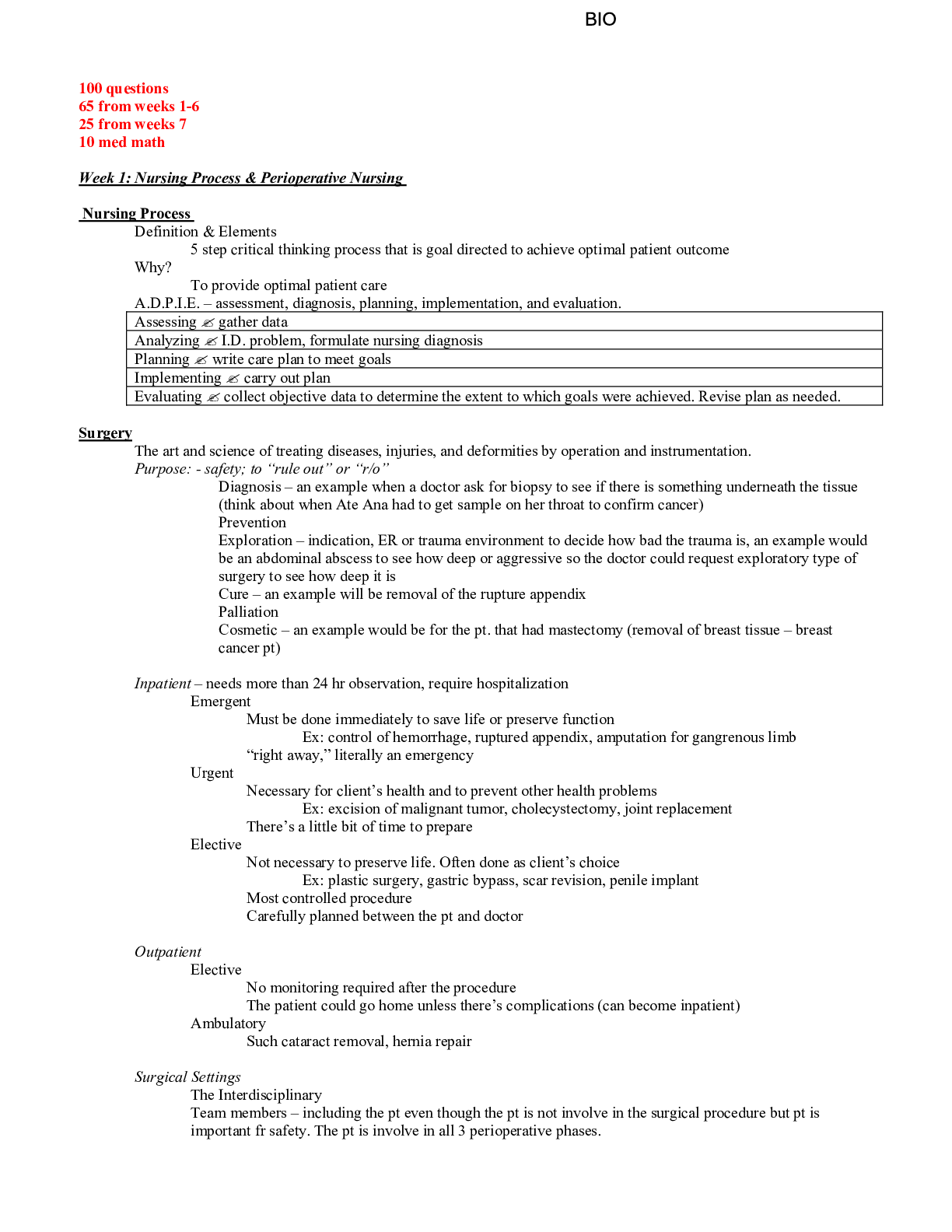
Reviews( 0 )
Document information
Connected school, study & course
About the document
Uploaded On
Jun 18, 2022
Number of pages
88
Written in
Additional information
This document has been written for:
Uploaded
Jun 18, 2022
Downloads
0
Views
42

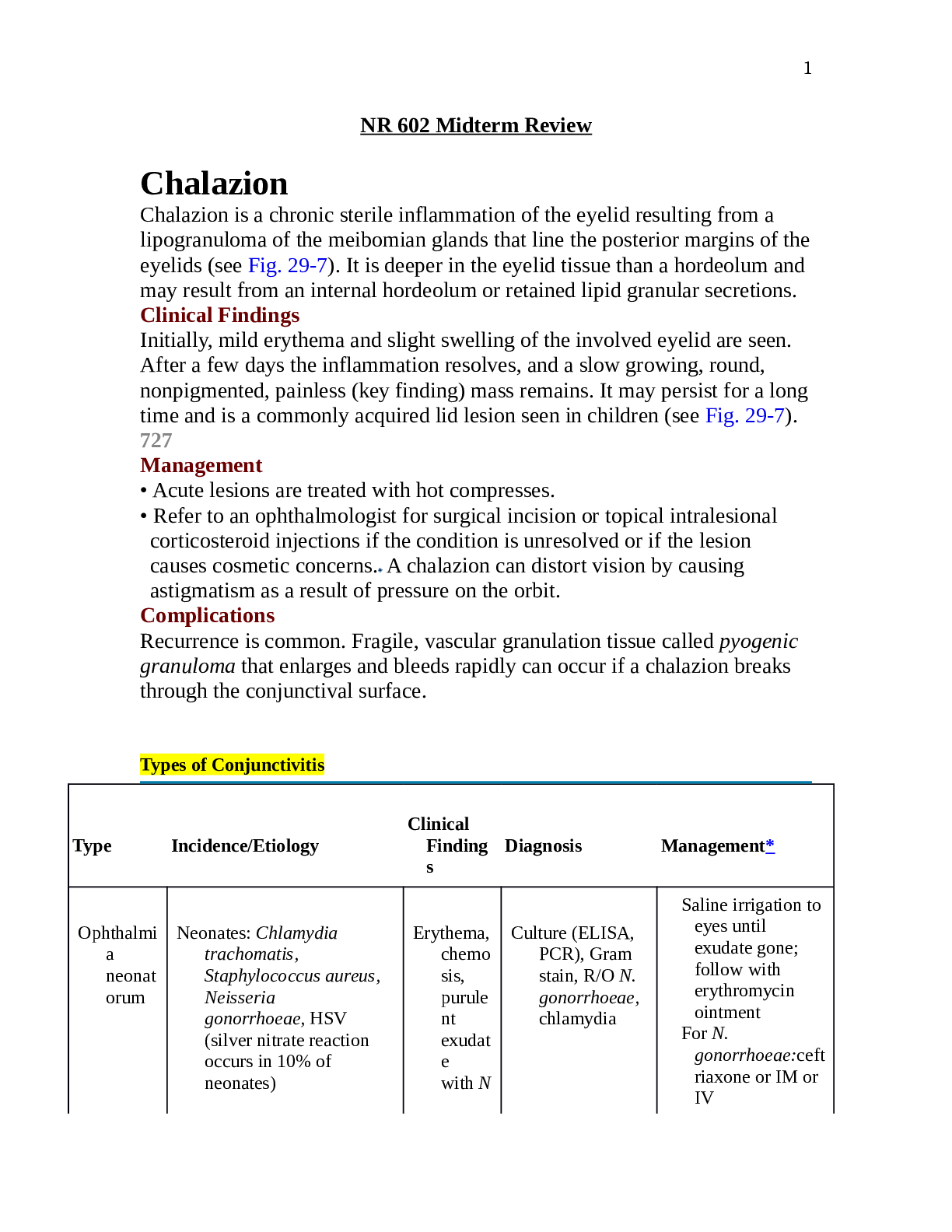
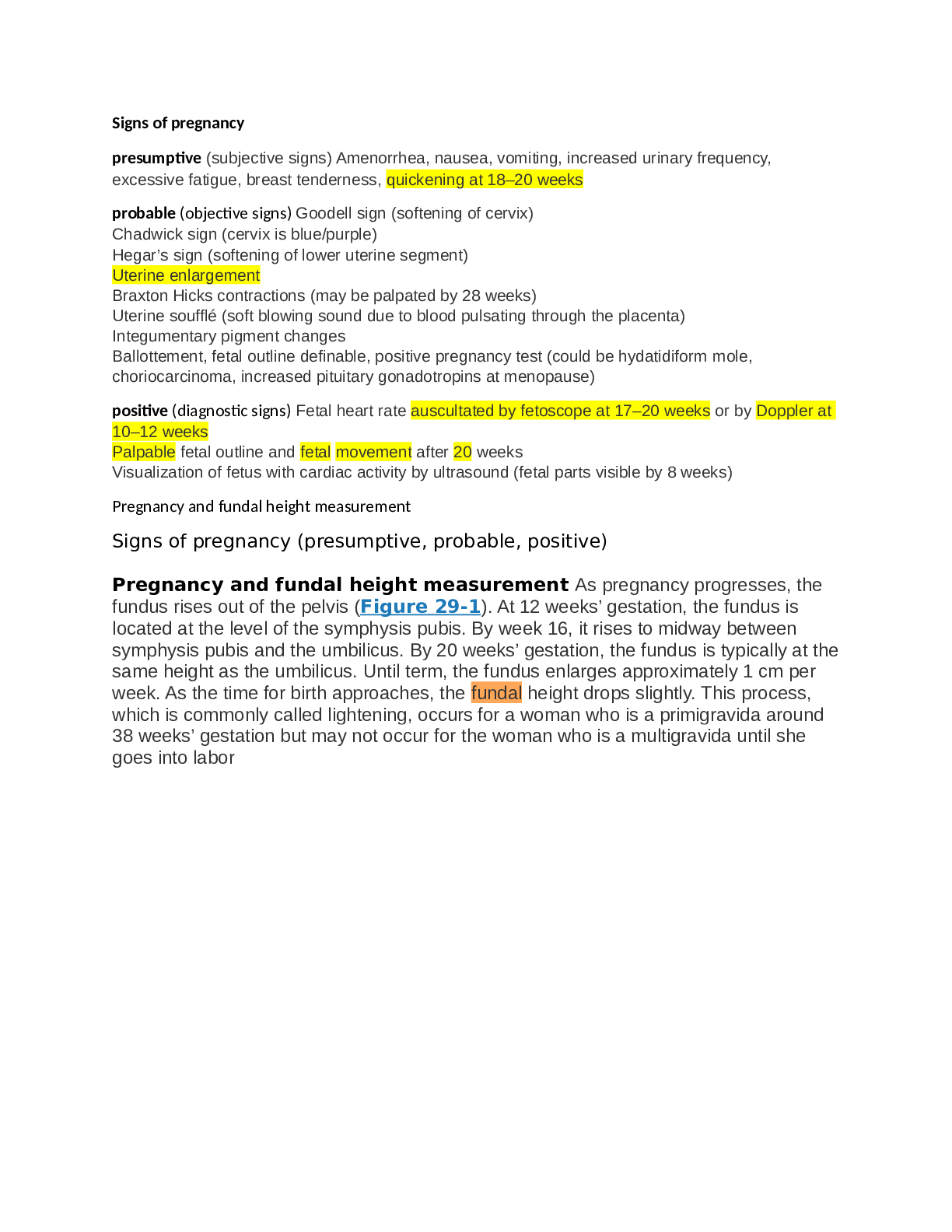

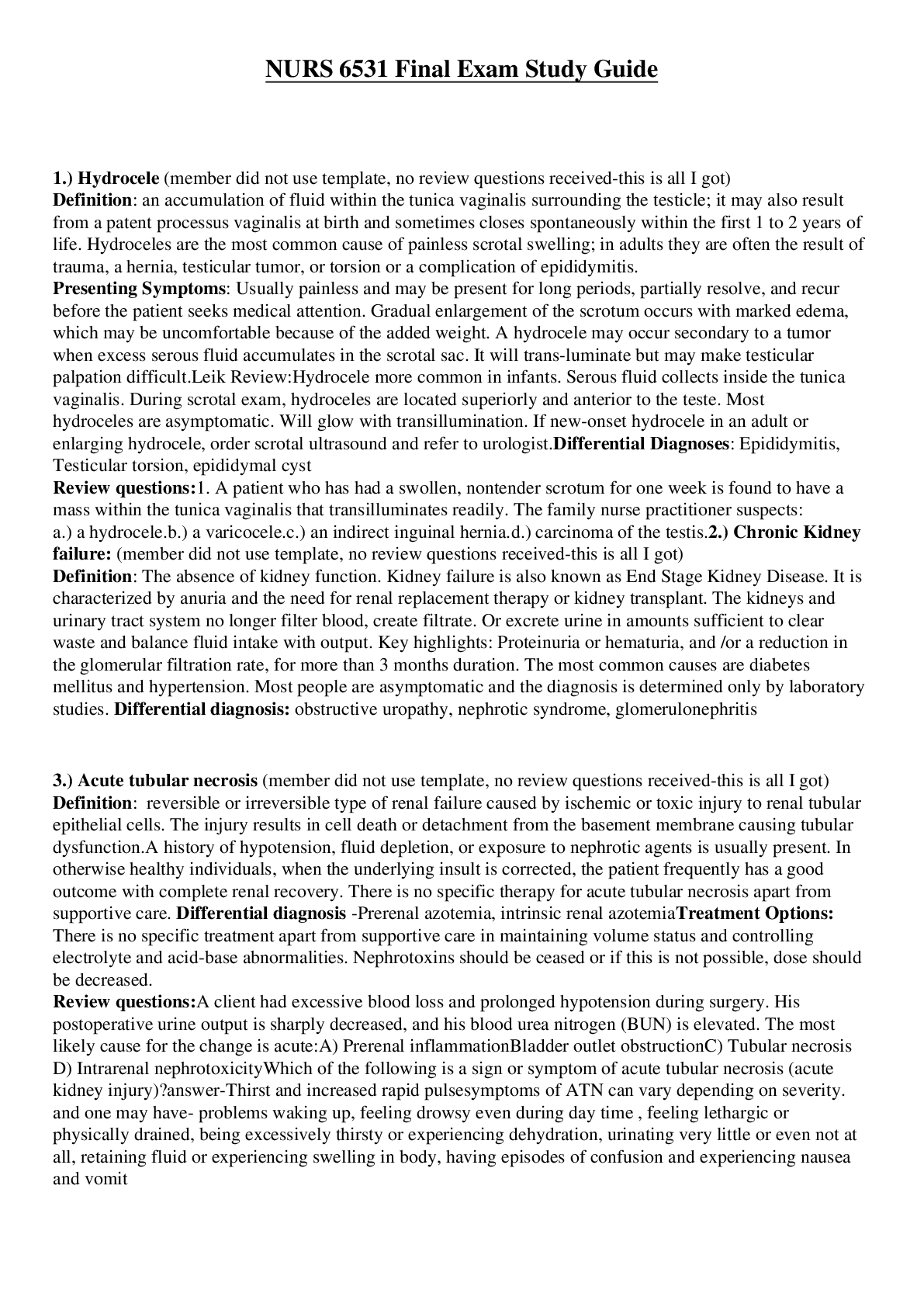

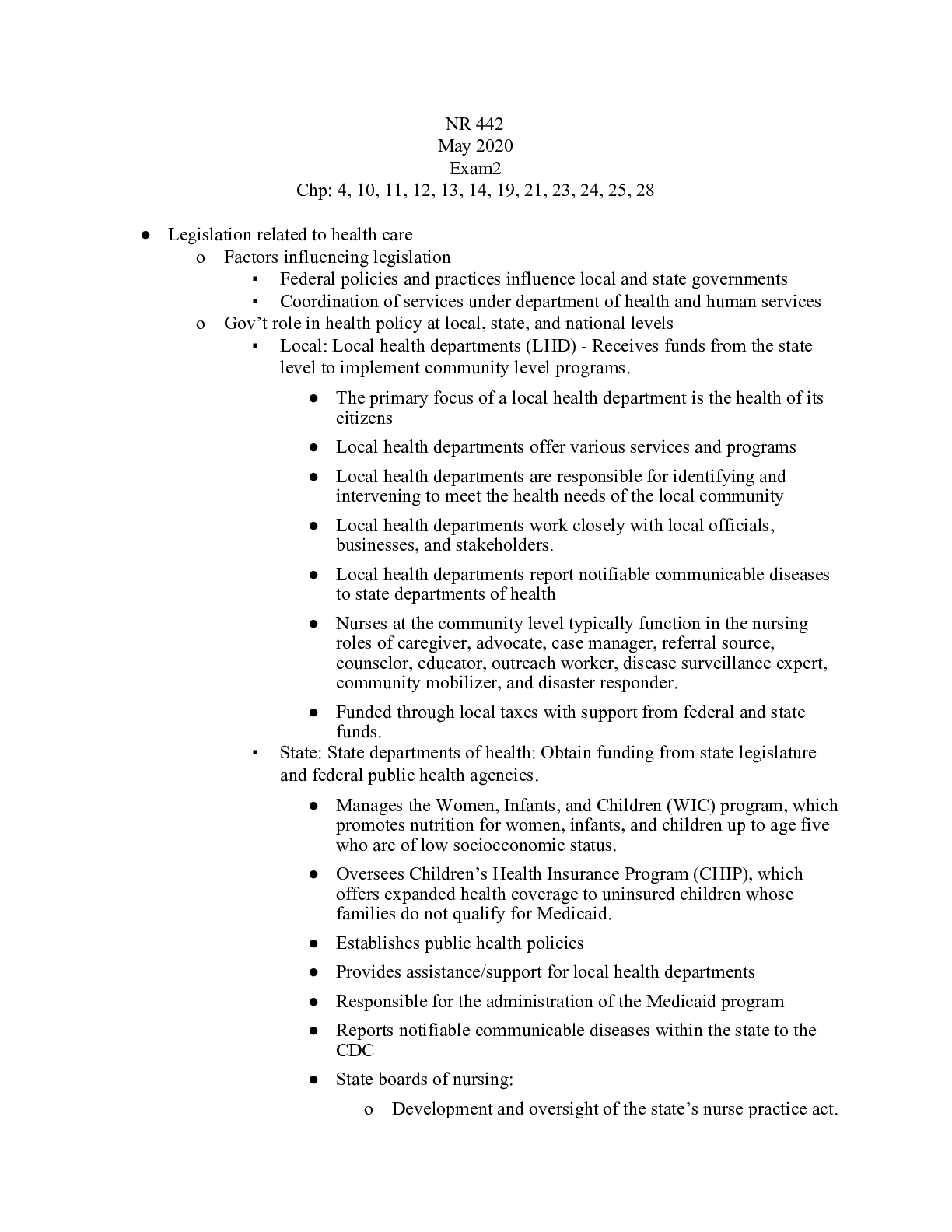


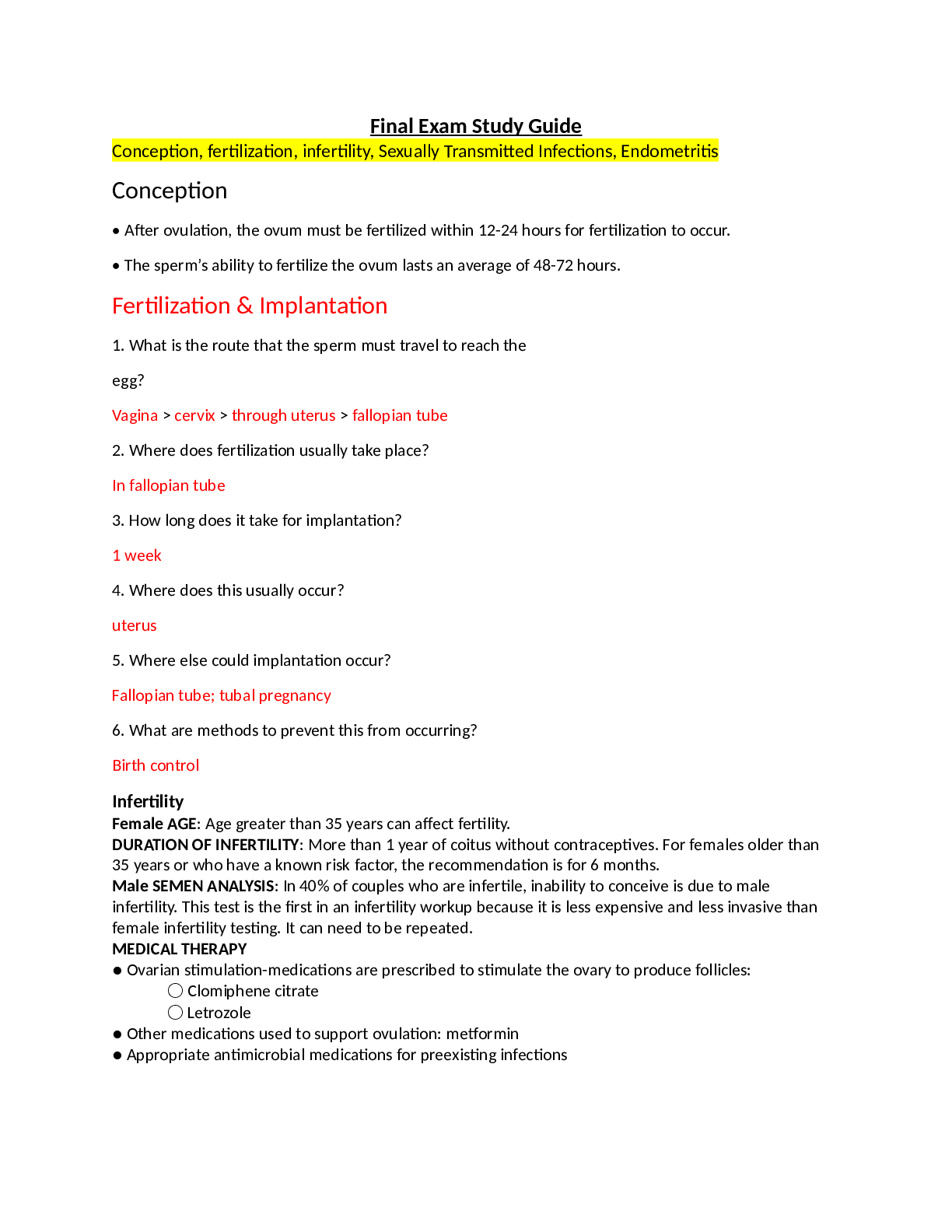
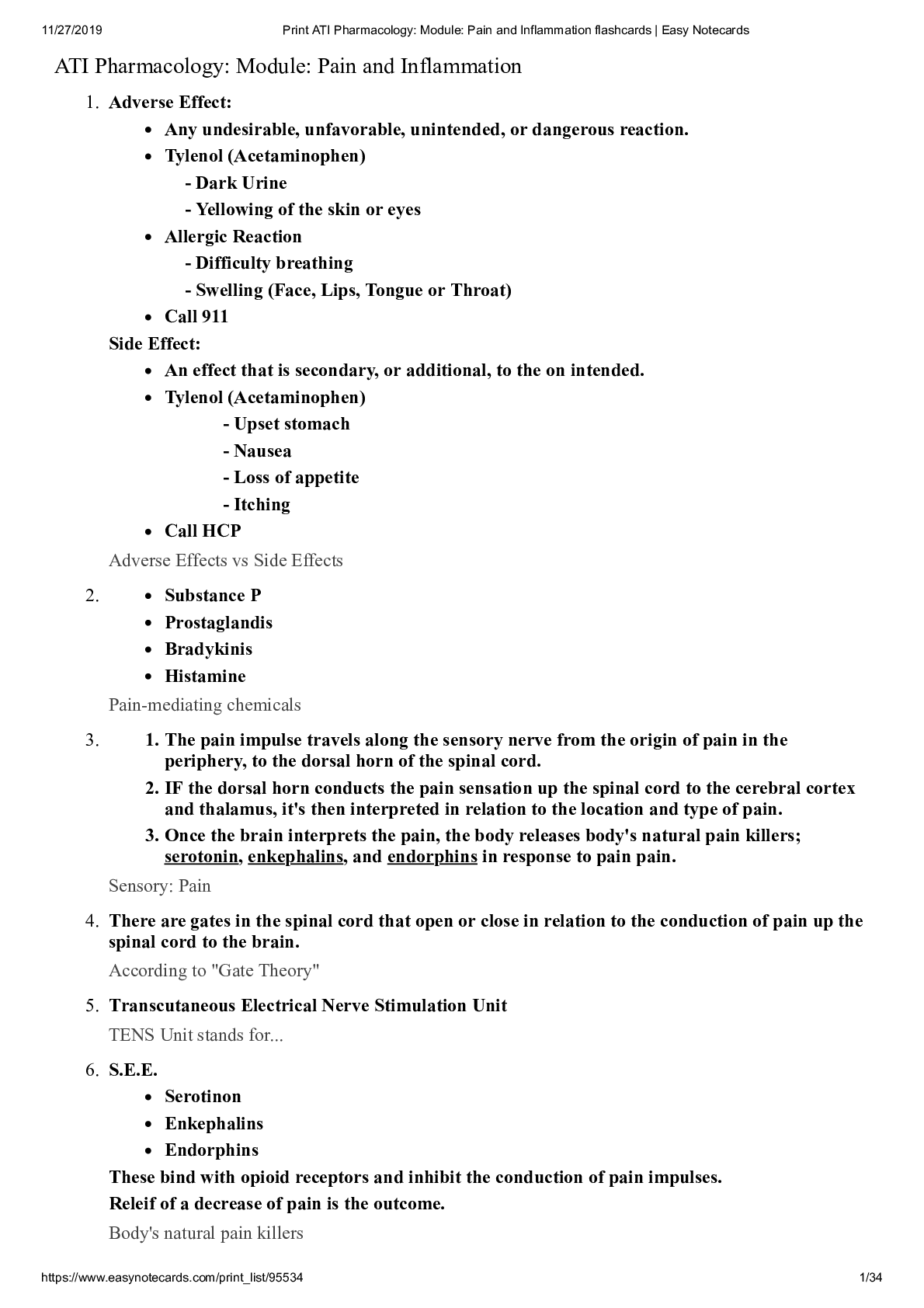
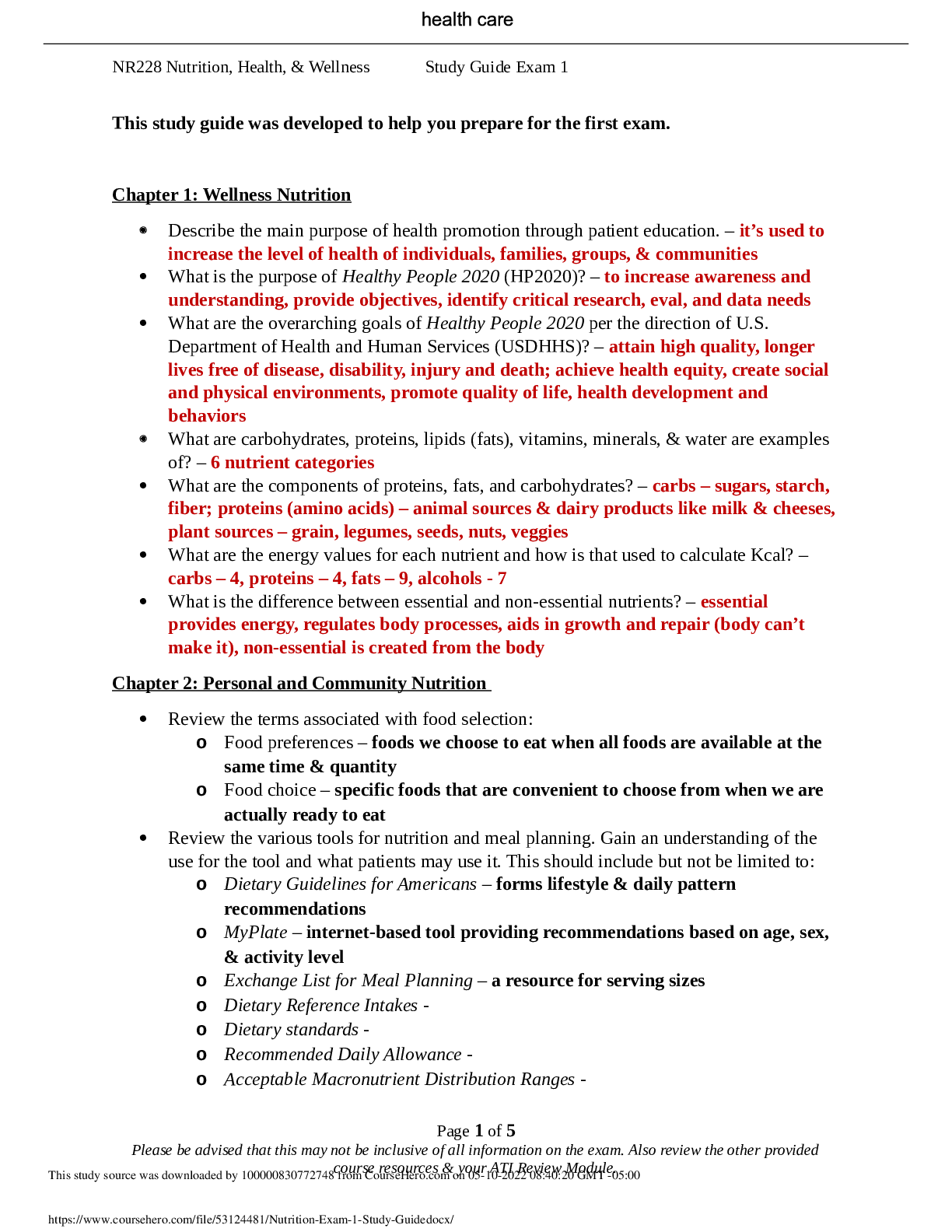
.png)
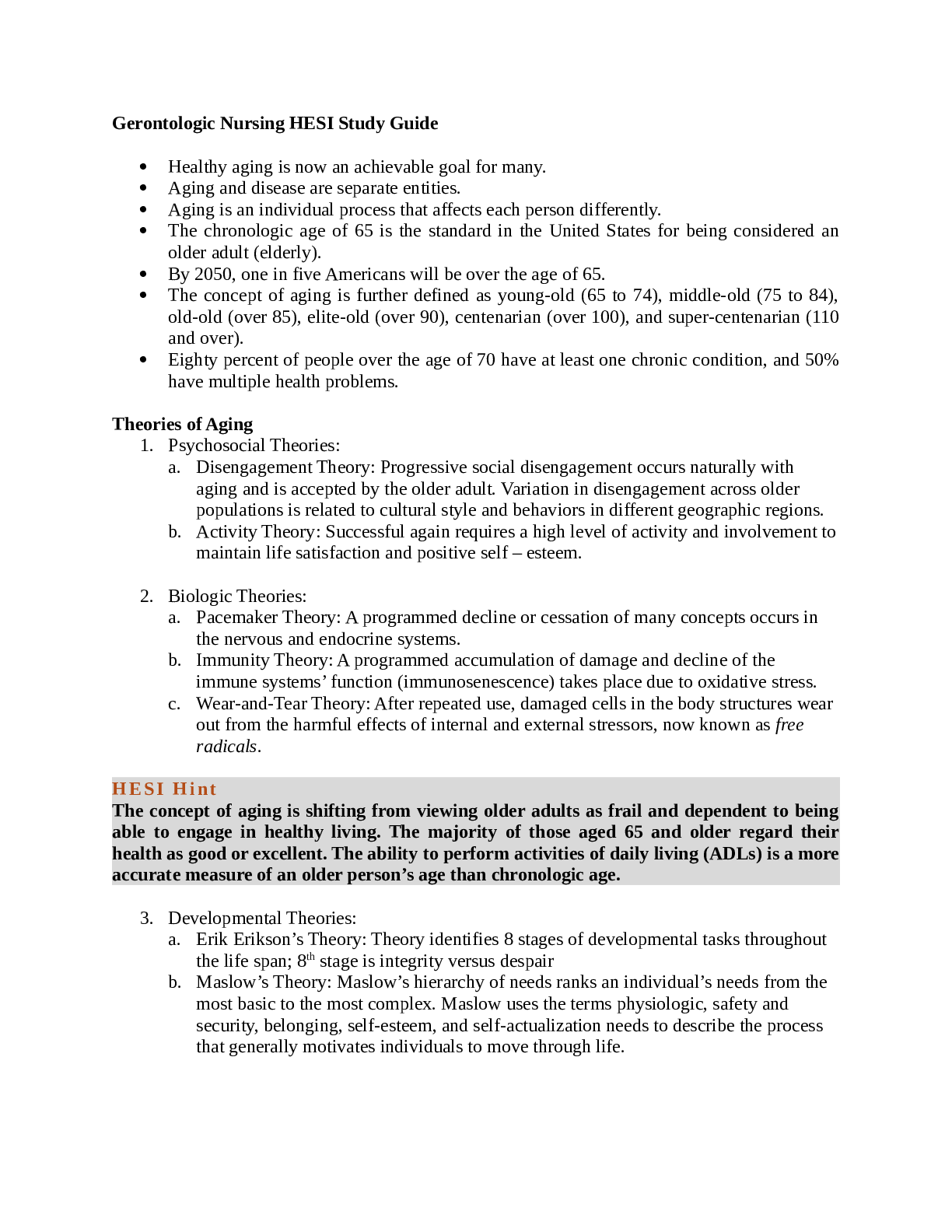
.png)








.png)

